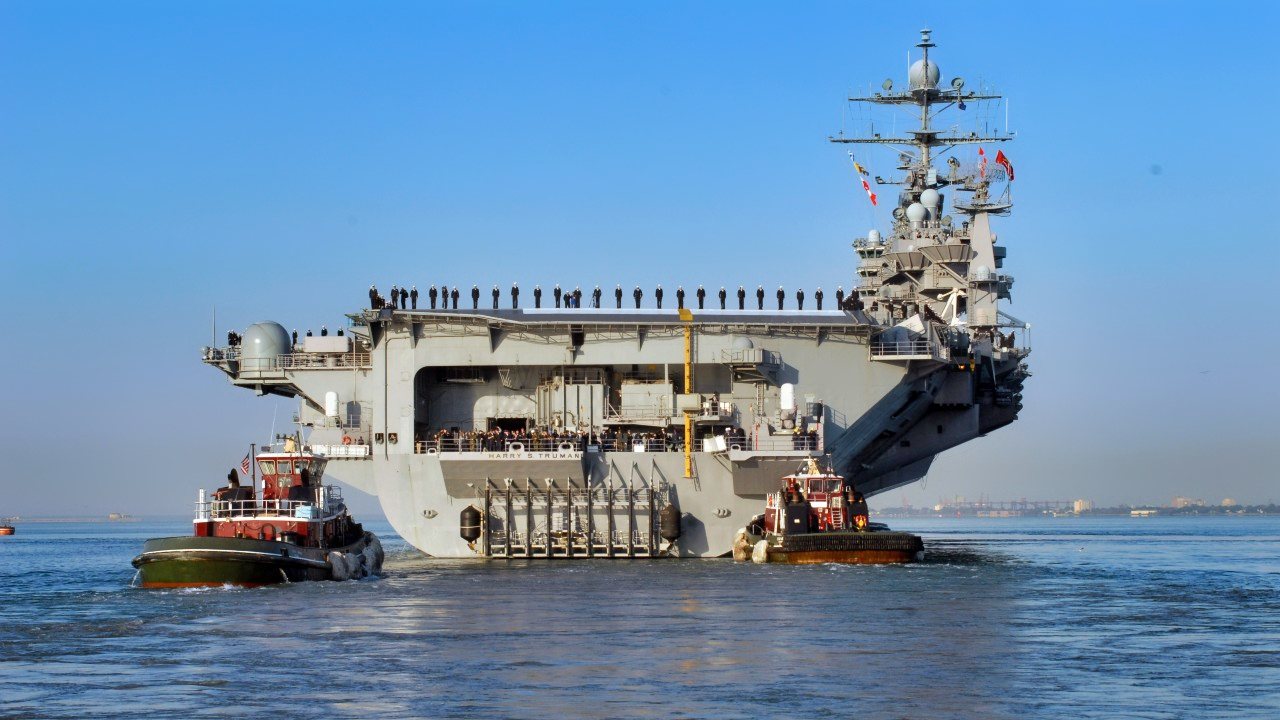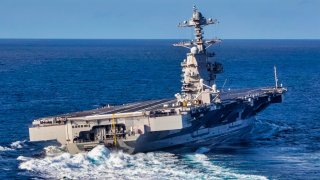The U.S. Navy's Ford-Class Aircraft Carrier Might Be 1 Giant Headache
The USS Gerald R. Ford is the most advanced aircraft carrier in history. The U.S. Navy’s newest flattop incorporates years of technological innovations and operational lessons in one warship. But there are some clear problems.
Summary and Key Points: The USS Gerald R. Ford is the most advanced aircraft carrier in history, incorporating 23 new technologies to enhance launch and recovery speed, including the Electromagnetic Aircraft Launch System, Advanced Arresting Gear, and Advanced Weapons Elevators.

-These innovations enable a 30% faster turnaround of fighter jets compared to older carriers, enhancing U.S. Navy capabilities against adversaries like China.
-However, the $13 billion Ford-class program (per aircraft carrier) has faced issues, including reliability problems with launch and recovery systems.
While these problems are being addressed, they highlight the challenges of introducing new technologies in naval operations.
The USS Gerald R. Ford is the most advanced aircraft carrier in history. The U.S. Navy’s newest flattop incorporates years of technological innovations and operational lessons in one warship.
But to get where it is, the Ford-class aircraft carrier program has been through some rough seas.
What’s New in the Ford-Class Aircraft Carrier?
The USS Gerald R. Ford came hand in hand with twenty-three new technologies. The most important updates are the Electromagnetic Aircraft Launch System (EALS), which can launch aircraft at a faster rate than older steam catapults; the Advanced Arresting Gear (AAG), which is designed for safer landings; and the Advanced Weapons Elevators (AWE), which is designed to bring up munitions faster on the deck to resupply and rearm aircraft. Overall, the Ford-class carriers’ new technologies have one objective: to launch and recover aircraft faster than anyone else in the world. Current data indicate that the USS Gerald R. Ford has a 30 percent faster turnout of fighter jets than older Nimitz-class aircraft carriers and anything near-peer adversaries like China have.
It’s not that the Navy’s older aircraft carriers can’t launch and recover aircraft quickly. Rather, America’s main adversary, China, has been investing heavily in Anti-Access, Aerial Denial (A2/AD) technology that could prevent U.S. aircraft carriers from operating in a certain “bubble” on the battlefield. So, the ability to launch and recover aircraft faster is also designed to counter the A2/AD systems.
“The new systems incorporated onto Ford-class ships are designed to deliver greater lethality, survivability and joint interoperability with a 20% smaller crew than a Nimitz-class carrier, paving the way forward for naval aviation,” the Navy stated after the USS Gerald R. Ford finished in its operational deployment.
To be sure, these new features don’t come cheap. The check for the USS Gerald R. Ford came at a jaw-dropping $13 billion. The Navy plans to acquire at least another ten carriers of the Ford-class, but the cost is expected to fall as it always does after the maiden weapon system of any program.
However, wherever there is a new technology, there are always issues.
The Problems
After its first training deployment in 2022, the USS Gerald R. Ford spent almost two months undergoing continuous maintenance to address issues that came up while at sea. Moreover, the Electromagnetic Aircraft Launch System didn’t work as intended and several naval aviators weren’t able to certify operations on the new flattop. Issues with the launching and recovering system persisted in 2023, with the Pentagon’s Director of Operational Test & Evaluation (DOT&E) reporting that the “reliability of CVN 78 catapults, arresting gear, and jet blast deflectors (JBDs) continues to have an adverse effect on sortie generation and flight operations efficiency.”

Although the Navy has worked on these issues, as a brand new warship and the first of a whole new class, the USS Gerald R. Ford will continue to present issues. The goal, however, is to fix them as soon as possible and ensure additional carriers of the Ford class are ready to go from the start.
About the Author:
Stavros Atlamazoglou is a seasoned defense journalist specializing in special operations and a Hellenic Army veteran (national service with the 575th Marine Battalion and Army HQ). He holds a BA from Johns Hopkins University and an MA from the Johns Hopkins School of Advanced International Studies (SAIS). His work has been featured in Business Insider, Sandboxx, and SOFREP.
Image Credit: Creative Commons.


